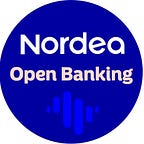Opening Night for Open Banking
The road to Open Banking never did run smooth. Erik Zingmark, Co-Head of Transaction Banking at Nordea, told us “The new PSD2 regulation will fundamentally change banking as we know it,” and that kind of change always includes some growing pains.
During the years, I have learned that banks are built for stability. They are full of complex legacy systems, byzantine infrastructure, Escher-like architecture. Historically, this makes sense; banks have had to be cautious about who they do business with. Partners have been subjected to rigorous vetting processes to reduce the risk to the bank. Open Banking has forced banks to change the way they do business with third parties, transitioning from treating them as suppliers to treating them like trusted partners or customers.
This gives some insight into how special Nordea’s Open Banking project really is. It is a large-scale example of a truly new way of working. We have adopted a tiered approach to producing and rolling out our Open Banking features. First we opened the portal for the developers who wanted to be part of our pilot programme. After hundreds of developers flooded into the system, we chose 22 of them to participate as initial pilots. While they were working we considered the eventual benefits of such collaborations, while also thinking about what our different roles are in this venture.
Performing without a script
One of our biggest challenges has become one of our greatest achievements so far. Within Europe there are several standards being developed (Open Banking UK, Berlin group, CAPs, etc.), and each standard is at a different level of maturity. On top of this, local laws vary by country, especially in the area of consent and user authentication, making it challenging to develop one universal solution. Add to that the uncertainty on the interpretation of the law and you have a perfect example of being caught on stage without a script.
By exposing our APIs in the sandbox first, we have learned from our pilots that they value developer-friendly data models and good documentation above everything else. With this feedback we redeveloped our APIs, making them more developer-friendly and will continue this work until we reach a satisfactory quality level.
Now, after so many months of hard work and constant iterations, we are moving forward into the next phase of our piloting, which introduces access to production data. Again, we are selecting a small number of partners to work with us in these initial stages. Together with pilot customers — for now limited to Finland, but gradually expanding to customers in the other Nordic countries — these selected third parties will build applications on top of our APIs using real production data.
The third party applications will be able use the Account Information Service (AIS) API where they can retrieve account information details and initiate payments through the Payment Initiation Service (PIS) API. The end users will be able to authenticate themselves, giving consent to the third-party provider to access their accounts. As we work through this process we will add more pilots into the program, using their feedback to keep improving for the next round of developers.
It’s a balancing act
A key question throughout the initial stages of Open Banking is how do we balance the bank’s need to reach compliance with the ambition of both our internal and external development teams? It’s difficult to prioritise what we should do first. When a thousand developers come to you with an idea, how do you decide who to partner with?
We want to do more than just meet the base-line requirements of PSD2 compliance, which will start being enforced in 2019. Open Banking has the opportunity to improve products and services in many areas, both within Nordea and for our partners. We envision a future where Nordea hosts a premium marketplace for fintech collaboration. Reaching the point where we’re offering our pilots real production data is a big step in that direction.
I can see a long road ahead of us, and I am excited for what comes next. In some ways the hard work of the initial stages is behind us and now we can turn our attention to the creative services currently in development. Compliance is one motivating force, but it’s important to keep our ambition level high and remain first-movers in this exciting area.
About the author
Sanela Dulic is a Strategic Business Developer in Nordea Open Banking and is driving the Open Banking project in Nordea.
Sanela has a long history working in Nordea, within cash management, netbanking and complex development initiatives.
